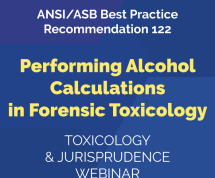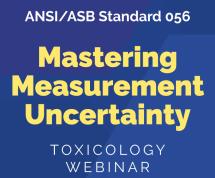Search
Explore content from JFS, ASB, the AAFS Newsfeed, and other content using the search bar or filters.

Standard for the Technical Review of Bloodstain Pattern Analysis Reporting

Forensic Toxicology: Terms and Definitions

Terminology for a Suspected Pattern of Dental Origin

Standard for Collection and Preservation of Document Evidence

AI as a decision support tool in forensic image analysis: A pilot study on integrating...
This study evaluates the effectiveness of artificial intelligence (AI) tools (ChatGPT‐4, Claude, and Gemini) in forensic image analysis of crime scenes, marking a significant step toward developing bespoke AI models for forensic applications. The research involved independent ana...
Correction to: Forensic investigation of a shawl linked to the “Jack the Ripper” murders
Program Chairs Seeking Submissions
In Memoriam—Professor Zug Standing Bear, PhD
2025-26 Nomination Period Now Open for Academy-Wide Awards
Preparations for Advancement
ASB Newsletter – April 4, 2025

CMV2U‐Net: A U‐shaped network with edge‐weighted features for detecting and localizing...
The practice of cutting and pasting portions of one image into another, known as "image splicing," is commonplace in the field of image manipulation. Image splicing detection using deep learning has been a hot research topic for the past few years. However, there are tw...
Effect of mounting a sound suppressor on distribution and total amount of inorganic...
Sound suppressors critically modify barrel overall length and ballistic performances of hosting guns and are therefore expected to influence the patterns of the plumes of gunshot residues (GSR) reaching the targets. Despite the forensic interest, in recent years, a single paper w...
Assessment of handheld Raman spectroscopy for forensic analysis of dark‐colored bulk...
The field identification of explosives is critical for crime response, requiring specialized protocols and often the support of Explosive Ordnance Disposal (EOD) teams to ensure safety. Handheld Raman spectrometers are widely used for this purpose due to their portability, nondes...
Mastering Measurement Uncertainty: From Theory to Practical Application
ANSI/ASB Standard 056 | Like any standard, there are a variety of ways to implement based on the laboratories scope. This webinar will discuss several approaches to implementation and provide helpful tools to ease the process.

ANSI/ASB BPR 122 - Best Practice Recommendations for Performing Alcohol Calculations in Forensic Toxicology
This session will review the pharmacokinetic principles of alcohol as they relate to performing calculations in forensic toxicology casework. The recommendations contained within ANSI/ASB BPR 122 will be discussed and examples will be provided of how to apply those to real-world case scenarios.
